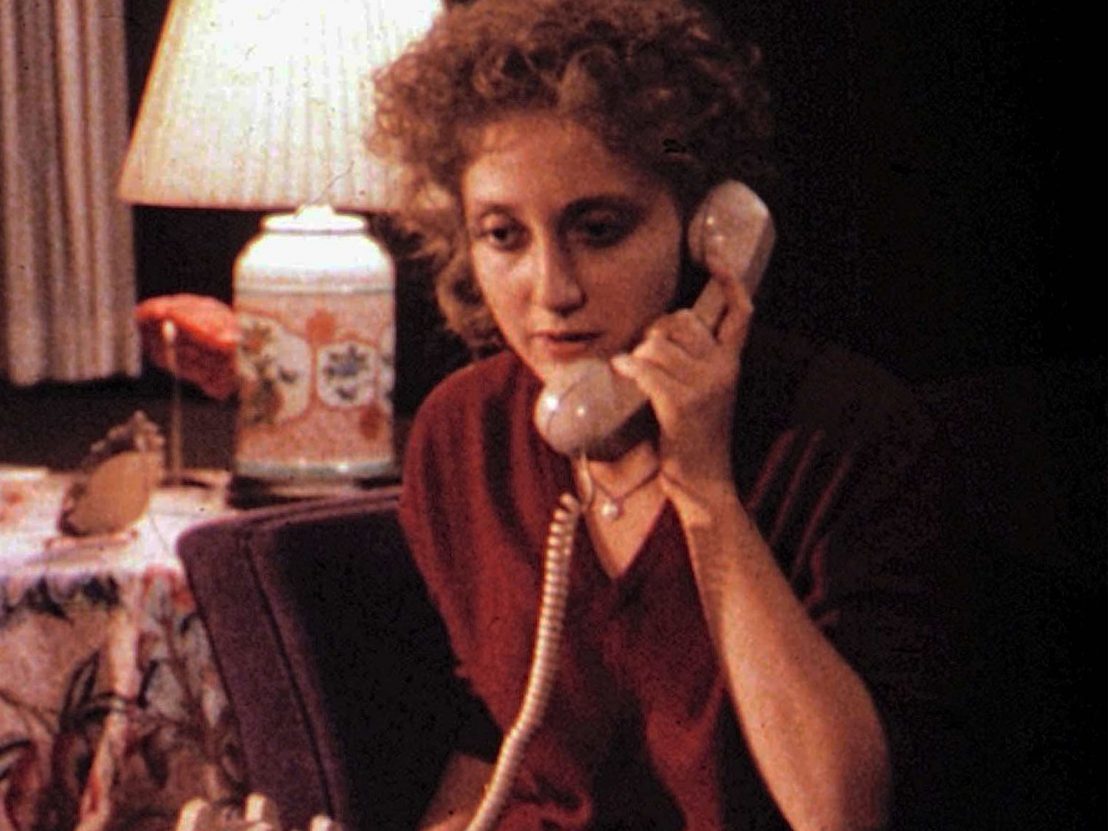
It is for a single (lengthy) sequence, perhaps even for a single line, that Fred Walton’s debut feature When a Stranger Calls has taken up residence in the collective unconscious. The film’s opening section was adapted from Walton’s earlier short The Sitter, which was in turn inspired by an urban legend from the 1960s, ‘the babysitter and the man upstairs’. In it, as babysitter Jill Johnson (Carol Kane) sits downstairs in the suburban LA home of Dr and Mrs Mandrakis, occasionally helping herself to a fortifying drink from their living-room bar, she becomes increasingly alarmed by a nuisance caller who keeps asking, in his distinctive English accent, “Have you checked the children?”
On paper, the scenario might sound repetitive, but on the screen it it agonisingly tense, as this opulent bourgeois environment gradually has every notion of security stripped away from it. Even as Jill behaves with impeccable responsibility, doing all the things one should in her situation, her isolation, vulnerability and helplessness become ever more pronounced. The caller’s words, with their insistent reference to the children’s safety, cut to a deep anxiety of middle-class America, exposing the dangers that can so easily prowl the shadows in even that safest seeming of places, a well-appointed, all-mod-cons home in a ‘good neighbourhood’.
This opening act ties When a Stranger Calls to Bob Clark’s 1974 slasher Black Christmas, with its similar ‘he’s calling from inside the house!’ plotting, while also obviously influencing the opening sequence of Wes Craven’s revisionist meta-slasher Scream. And the film’s subsequent two acts, set seven years later, directly evoke John Carpenter’s Halloween by having child killer Curt Duncan (played by a terminally ill Tony Beckley) escape his psychiatric asylum and ‘come home’. Accordingly When a Stranger Calls is standardly associated with the slasher end of horror. To appreciate just how different it is from the other entries in this then still nascent subgenre, we need to move on from its opening to its more critically neglected middle section.
When a terrified Jill finally flees to the house’s front door and opens it with a scream, a jarring jump cut to the face of John Clifford (Charles Durning) suggests that he is the one who has been terrorising her. In fact, John has not appeared at the door until several hours later, and he is not the menacing killer but the police detective assigned to investigate the grisly crime scene at the Mandrakis property.
Yet the film continues to confuse the identities of Curt and John: the former, though still crazed, is also humanised and apparently seeking some sort of redemption; while the latter, now a private investigator hired by Dr Mandrakis, is not just hunting Curt (as Curt himself hunts), but is also expressly planning to kill Curt in cold blood. “Make it good,” is the ethically ironised comment made by Sgt Sacker (William Boyett) when he learns of his former police partner’s murderous intentions.
As this morally murky reversal of rôles unfolds in the dingy dives, church missions and mean streets of downtown LA, the cat and mouse between John and Curt plays out as gritty neo-noir, complete with plenty of expressionistic shadow projected onto the walls of alley ways, underpasses and homeless shelters. “It’s probably just some weirdo,” the policeman had told a worried Jill down the phone line in the film’s opening scene. “The city’s full of ’em. Believe it or not, we get reports like this every night.”
The second act of When a Stranger Calls takes us deep into that weirdo city, and into a demi-monde of ’tecs, bums and barflies – people who, unlike the Mandrakis family, have to fight for every downed drink and every last cent. In her jaded, tough-as-nails, seen-it-all-before attitude, Curt’s latest quarry Tracy Fuller (Colleen Dewhurst) could hardly be in greater contrast with Jill – and the difference in class terms between this urban setting and the leafy locale of the first act could not be starker.
Curt is a misfit, yet downtown he seems to fit right in. Beat up, broke and lost in his new environment, Curt imagines himself ‘invisible’ – a view which is as much social commentary as his psychosis doing the talking. In houses like that of the Mandrakis’ or of Jill and her husband, Curt must hide – whereas amid LA’s overlooked underclass, he does not have to. Of course, there is nothing America’s monied classes fear more than the invasion of that indigent substrate upon their private property. “I had to come back,” Curt taunts Jill in the film’s climax, “and do you know why?” The question is left unanswered, but one reading might be that this deranged man wants another taste of the good life that Jill and others enjoy, and from which he is socially excluded.
When a Stranger Calls is released on Blu-ray by Second Sight on 17 December.
Published 17 Dec 2018

By Anton Bitel
Shot in a real abandoned asylum, Richard Friedman’s gore-fest shows a subgenre in microcosm.

By Adam White
Wes Craven’s seminal 1996 film occupies a uniquely female space.

By Anton Bitel
Black Christmas contains one of the earliest examples of the ‘final girl’ trope in horror cinema.